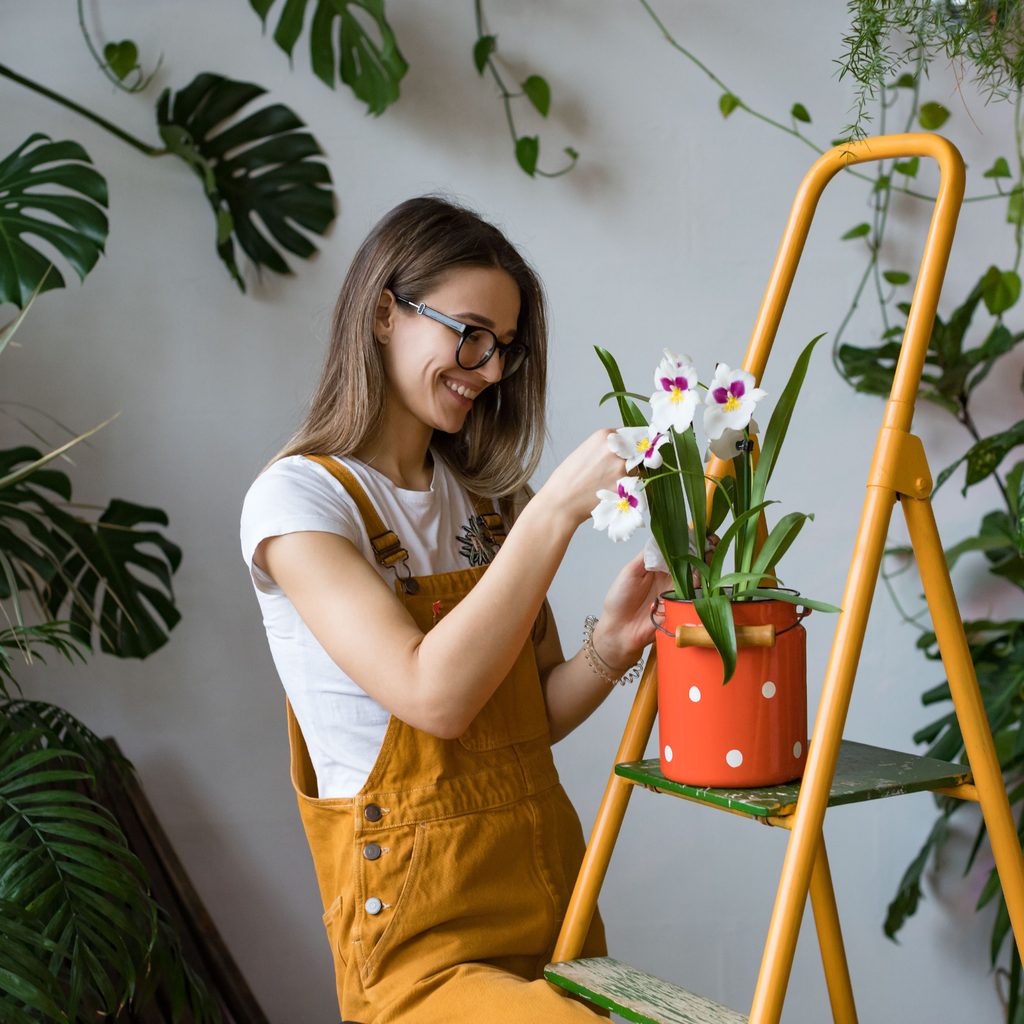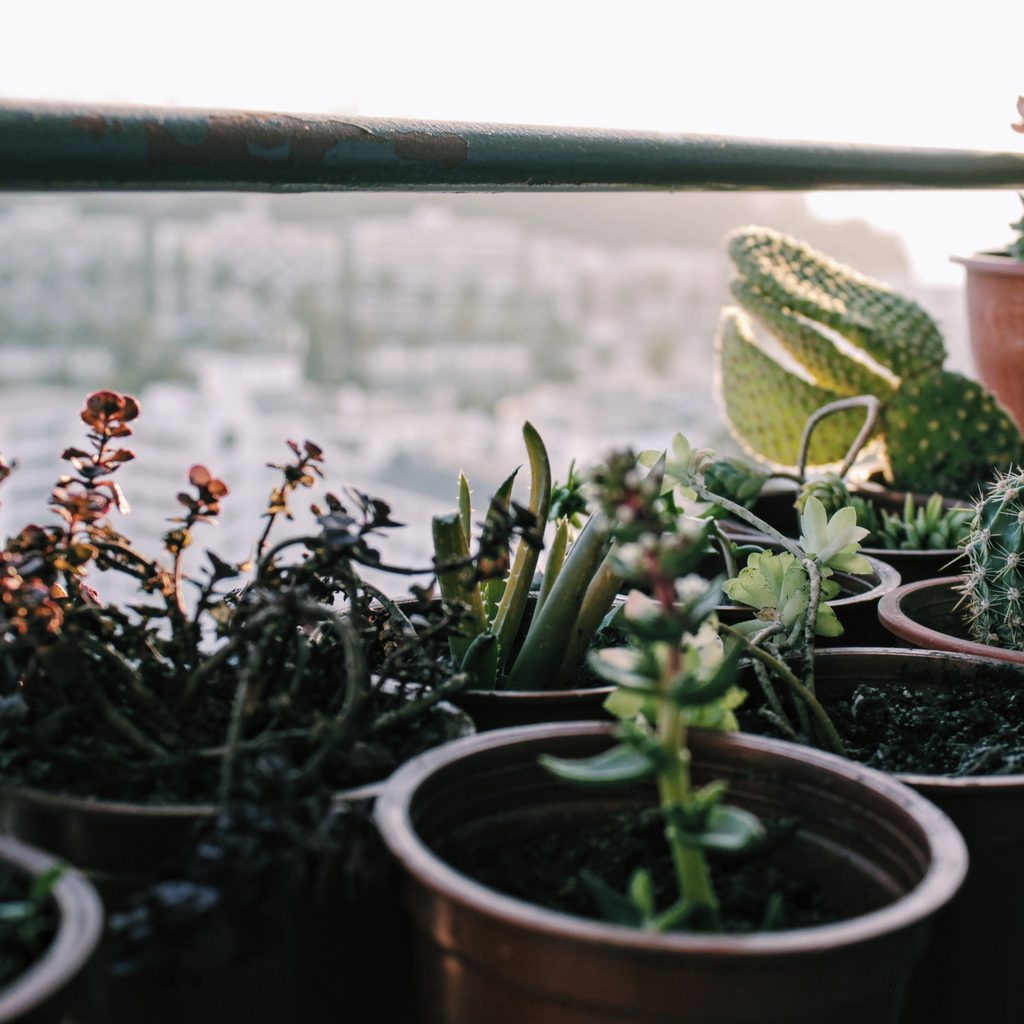Separated from his loved ones at the start of the pandemic, Stephen Hill did the only thing he could think to do: he left houseplants outside on each of their doorsteps. Propagated from his own garden, each plant extended a source of community that the shared uncertainty of the pandemic had taken away.
As the Creative Director and General Manager of the Chicago plant store Sprout Home, Hill surrounds himself with plants, caring for a variety of species in both his indoor and outdoor gardens. Speaking with customers at his store, he found the pandemic heightened many people’s interest in houseplants.
“I’m sure the story is different for any one person,” Hill said. “And I’ve heard a lot of great reasons from customers, too, including the increased time at home. It also became stress-relief for many, a chance to focus and quiet the mind with their plant care.”
For others, caring for plants helps connect families through a shared activity they can do at home, Hill said. For some who work from home, their new interest in houseplants sprung from the panic to create a professional background for their Zoom meetings.
“While that speaks generally to one group of people, there’s plenty more that did not or were not able to work from home, or found themselves without work at all…” Hill said. “For many, it was a year of stress and uncertainty, a bit of which is maintaining its hold on many. I can only surmise from my personal indoor garden that this hobby, this task, this chore is a great way to disconnect from those stresses… and admittedly have a little bit more control over a desired outcome.”

Many gardeners also turned to digital communities to stay connected and learn from one another throughout the pandemic. Even without working alongside one another in-person, gardeners found a sense of community through their beloved hobby.
With this houseplant trend continuing to surge, though, some worry about negative implications for the environment.
Plant miles
“It’s a logical fact that the vast majority of houseplants on the market are not grown locally,” Hill said. “In some climates and locations they certainly are, but greenhouses and nurseries are often in the warmer climates, leaving many of us a far distance from their origin. Production-wise, many of the ‘starts,’ plugs, and similar beginnings of our houseplants are brought into these nurseries from other [states], or even overseas.”
Referred by some as “plant miles,” some environmentalists warn that the transportation of plants across state lines or country borders can contribute to greenhouse gas production. Likewise, the emergence of luxury online services promising couture houseplants with swift delivery times across the country changes the landscape of houseplant upkeep and care.
Many plant distributors seek to alleviate some of the environmental cost of transporting plants through consolidating truck routes: full trucks and optimized routing can minimize waste, Hill said. Driving to a nursery, depending on your location, may even generate more carbon than the transportation necessary for the plant you buy to arrive there.
Contrary to popular belief, heating glasshouses to the correct temperature for plant production may actually cause more carbon emissions as opposed to transportation. Some distributors even outsource production to warmer climates where plants can be propagated outdoors instead to address this concern.
Like other industries existing in our current economic system, the plant industry at this time cannot be zero waste, but breakthroughs in technology offer greater efficiency as well as hope for the future of more sustainable practices.
Still, shopping local helps support your community’s economy while also limiting the environmental cost of traveling. Consumers can decide whether traveling to nurseries that produce everything in-house or walking to neighborhood plant stores suits their own needs best.
The problem with peat
Potting soil for houseplants often incorporates peat, because peat provides excellent moisture and nutrient retention. Peat, otherwise known as turf, effectively encourages plant growth; however, harvesting peat can devastate peatlands.
Peatlands, a type of wetland, store almost a third of the world’s soil carbon, more adept at sequestering carbon than every tree in every forest on Earth combined. In contrast, degraded peatlands contribute to climate change by emitting 1.3 gigatonnes of CO2 annually.
For those dedicated to preserving peatlands, alternatives to peat—such as coconut fiber, or coir—are available at many garden stores and nurseries. If you’re willing to compost at home, soil amended with compost offers similar benefits to peat like nutrient and moisture retention.
Never be afraid to ask questions and research the sourcing of any brands you see at garden centers or nurseries, or even encourage your favorite store to go peat-free. Hill recommends researching and, if necessary, only purchasing brands that practice sustainable land management in the harvest of peat.
“We do our best to be as careful as we can with what we carry in the store,” Hill said. “We do have some products that incorporate peat, but they have that land management certification. And we do also have the peat alternatives, like the coir.”
Air quality
Many houseplant lovers attest to the fact that houseplants improve air quality; one study from NASA in 1989 revealed that plants could even be used to remove cancer-causing chemicals from homes.
However, more recent research in November 2019 from Drexel University by Michael Waring, PhD and one of his doctoral students, Bryan Cummings, paints a different story.
“I think that people have been a lot more conscious during the pandemic about having better air filtration,” Hill said. “And obviously plants are not going to clean out respiratory droplets, but they’re still good to have.”
Plants indeed release oxygen into the air; however, the air in one house can be replaced in only a few hours due to ventilation, from opening windows or doors. NASA studied how plants behaved in sealed chambers in a laboratory, but didn’t calculate how airflow in an average home could impact these findings.
Waring and Cummings reviewed studies spanning 30 years to calculate the clean air delivery rate. In other words, they compared plants’ ability to filter the air to the natural ventilation in an average room. Their analysis found plants’ ability to remove airborne volatile organic compounds to be slower than the standard rate of air exchange in a building, deeming plants’ impact on the air quality in a single house ineffective.
“Is one plant in your living room going to make a noticeable difference? No. Will 20? No,” Hill said. “But they’re still doing something and bringing us a sense of joy and comfort, and if we slow down and relax our heart rate a bit, we are breathing better.”
Hill also recommends focusing less on trying to improve the air quality of an individual house, and instead working towards improving the air quality of your local ecosystem. Working outdoors, planting native species of plants, replacing lawns with ground cover alternatives, planting trees, and influencing others to do the same generates greater results than adding a few houseplants to a single home ever could.
The power of consumers
Consumers play a substantial role in raising consciousness and putting their capital towards trustworthy sources for their plants. Every consumer holds power through boycotting products that generate substantial greenhouse gas emissions and educating others to do the same.
Anyone considering buying a houseplant should also understand that houseplants are living things that should be cared for. While a portion of the plant industry subtly encourages consumers to view plants as disposable, many plant stores actively help customers address plant diseases and find ways to encourage plant longevity.

“If we want to talk about waste and efficiency—we want to buy plants that are going to last a while, and not something that looks good and we anticipate replacing sooner than later.”
Hill recommends measuring a plant collection based on its growth over time, instead of by number. Monitoring a plant’s growth over time can feel more rewarding, as opposed to buying decorative plants destined to die and then replacing them.
Propagating houseplants helps gardeners save money and learn more about their plants, while also being a sustainable way to get new plants. Trading plant cuttings with friends and family can be a great way to grow your collection, too.
Knowledge building
Gardening provides people the chance to learn about plants through direct hands-on experience, and houseplants open up more opportunities for apartment renters or city dwellers with limited space.
“I think it’s also a wonderful experience to watch a plant go through various stages of life,” Hill said. “New leaves alternating with flowers, no matter how insignificant or spectacular, an ebb and flow that I think is a really healthy analogy to our own lives as we strive to be better humans overall. There’s also just plain joy in watching the natural world take its course on our own window sills.”
Through starting a garden, people become connected to nature. Hill argues this can open doors to greater understandings about the environment and even cause gardeners to pursue sustainable habits in and outside of the garden.
Hobby or harm?
Are houseplants really good for the environment? The answer lies in the grey area—it ultimately depends on each individual’s practices and consumer habits.
“Is [caring for houseplants] zero waste? No,” Hill said. “But is it, in the grand scheme of how we live our lives, the biggest footprint we leave? Likely not.”
While individual decisions do matter, the largest contributors to climate change must curb emissions to create meaningful change. According to a 2017 Carbon Majors Database report, just 100 energy companies are responsible for 71% of global emissions.
And energy companies aren’t the only ones with the ability to significantly curb emissions. The top 15 food and beverage companies in the United States produce almost 630 million metric tons of greenhouse gases annually—more than the entire continent of Australia, the 15th largest source of greenhouse gas each year.
As a hobby, caring for houseplants stimulates both the mind and body; gardening combines observation and problem solving skills with a bit of physical activity, too. On an individual level, gardening—both indoors and outdoors—can provide various benefits, including an outlet for active learning and, of course, a way to elevate the style of any home.
Gardeners still need to do their part to minimize waste and reuse or recycle any materials whenever possible. Sometimes that means changing long-standing consumer habits or garden practices.
“Whatever feels right from the best of an individual. I’m just as human as we all are. I can’t judge…” Hill said. “For some folks, driving themselves out to a greenhouse is going to be just that experience that’s so great. There’s going to be that nay-sayer that says, ‘You drove your car! You didn’t carpool! You drove 20 miles to a suburban garden center instead of walking down the street and used all that gasoline.’ True. They’re not wrong, but what that doesn’t address is the holistic sense: getting out of the congestion of the city and going somewhere by yourself.”
Individuals need to measure the costs for themselves, while also supporting environmental protection organizations and encouraging the plant industry to stay dedicated to more sustainable methods through the money they spend.
Much like hobby bakers can buy eggs from local farms or visual artists can be mindful in how they dispose of paint waste, gardeners can grow native plants, avoid pesticides, and ditch their grass lawns in exchange for a natural lawn to promote biodiversity.
“If you have to make a little footprint somewhere, you can alleviate it somewhere else,” Hill said.


